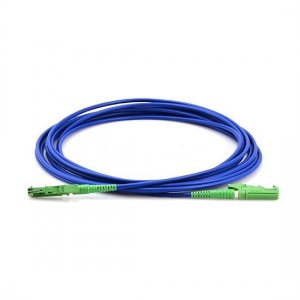
# Armored Fiber Optic Cable: Enhanced Protection for High-Speed Data Transmission
## Introduction to Armored Fiber Optic Cable
In today’s digital landscape, where high-speed data transmission is crucial, armored fiber optic cables have emerged as a reliable solution for demanding environments. These specialized cables combine the lightning-fast data transfer capabilities of traditional fiber optics with robust physical protection, making them ideal for challenging installations.
## What Makes Armored Fiber Cable Different?
Unlike standard fiber optic cables, armored variants feature additional protective layers that shield the delicate glass fibers from external threats. The most common armor types include:
- Interlocking metal armor (typically steel or aluminum)
- Corrugated metal tape
- Dielectric armor for lightning-prone areas
Key Benefits of Armored Fiber Optic Cables
The enhanced protection offered by these cables translates into several practical advantages:
- Superior Durability: Resistant to crushing, rodent damage, and accidental impacts
- Extended Lifespan: Maintains performance in harsh conditions longer than standard cables
- Versatile Installation: Suitable for direct burial, aerial, and conduit applications
- EMI Protection: Metal armor provides shielding against electromagnetic interference
## Applications of Armored Fiber Cables
Industrial Environments
Manufacturing plants and industrial facilities benefit from armored cables that withstand heavy machinery vibrations, chemical exposure, and temperature fluctuations.
Outdoor Deployments
For outdoor installations like campus networks or metropolitan backbones, armored cables offer protection against environmental factors and accidental dig-ups.
Military and Government
Secure communications networks often require the extra protection that armored fiber provides against both physical and electronic threats.
## Choosing the Right Armored Fiber Cable
When selecting an armored fiber optic cable, consider these factors:
| Factor | Consideration |
|---|---|
| Environment | Indoor, outdoor, direct burial, or aerial |
| Armor Type | Metal for maximum protection or dielectric for lightning-prone areas |
| Fiber Count | Single-mode or multimode based on distance requirements |
| Bend Radius | Ensure it meets installation requirements |
## Installation Considerations
While armored fiber cables offer superior protection, they require proper handling during installation:
- Use appropriate pulling techniques to avoid damaging the armor
- Follow manufacturer specifications for bend radius
- Properly ground metal-armored cables when required
- Use suitable termination methods for armored connections
Keyword: armored fiber cable
## Future of Armored Fiber Technology
As networks expand into more challenging environments, armored fiber optic cables continue to evolve. Recent developments include:
- Lighter weight armor materials without compromising protection
- Hybrid cables combining power and data transmission
- Enhanced fire-resistant armored cables for critical infrastructure
With these advancements, armored fiber remains at the forefront of